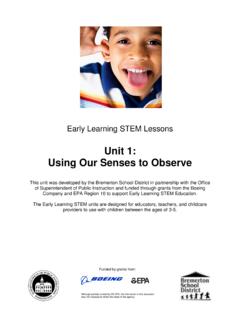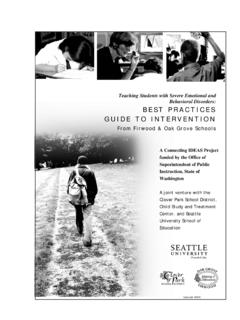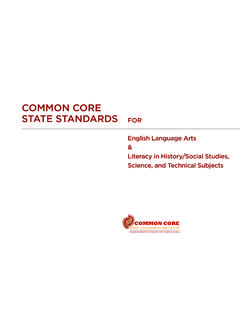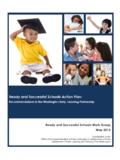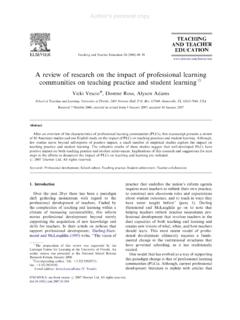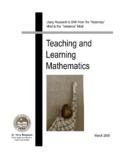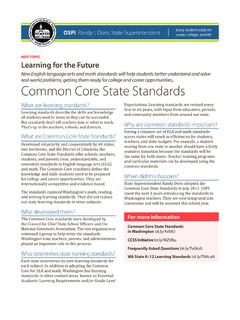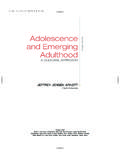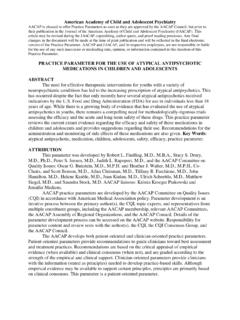Transcription of Characteristics of Improved School Districts
1 Characteristics of Improved School Districts themes from Research Dr. Terry Bergeson State Superintendent of Public Instruction October 2004. Office of Superintendent of Public Instruction Old Capitol Building Box 47200. Olympia, WA 98504-7200. For more information about the contents of this document, please contact: Sue Shannon, Ed. D. Office of Superintendent of Public Instruction E-mail: Phone: To order more copies of this document, please call 1-888-59-LEARN (I-888-595-3276). or visit our Web site at Please refer to the document number below for quicker service: 04-0045. This document is available online at: This material is available in alternative format upon request. Contact the Resource Center at (888) 595-3276, TTY (360) 664-3631. Copyright 2004 by the Office of Superintendent of Public Instruction, Olympia, Washington. The contents of this document may be reproduced and distributed for educational purposes without permission. The Office of Superintendent of Public Instruction complies with all federal and state rules and regulations and does not discriminate on the basis of race, color, national origin, sex, disability, age, or marital status.
2 Ii Characteristics of Improved School Districts themes from Reseach Prepared by G. Sue Shannon, Senior Researcher Pete Bylsma, Director, Research/Evaluation/Accountability Assessment and Research Office of Superintendent of Public Instruction Dr. Terry Bergeson Superintendent of Public Instruction Dr. Mary Alice Heuschel Deputy Superintendent, Learning and Teaching October 2004. CONTENTS. Executive Summary 1. Chapter 1 Introduction 7. emerging themes 8. Conceptual Framework 9. Methodology 10. Contents of This Report 11. Chapter 2 Effective Leadership 13. Focus on All Students Learning 14. Dynamic and Distributed Leadership 16. Sustained Improvement Efforts Over Time 19. Chapter 3 Quality Teaching and Learning 21. High Expectations and Accountability for Adults 22. Coordinated and Aligned Curriculum and Assessment 25. Coordinated and Embedded Professional Development 28. Quality Classroom Instruction 31. Chapter 4 Support for Systemwide Improvement 35.
3 Effective Use of Data 36. Strategic Allocation of Resources 39. Policy and Program Coherence 42. Chapter 5 Clear and Collaborative Relationships 45. Professional Culture and Collaborative Relationships 46. Clear Understanding of School and district Roles and Responsibilities 49. Interpreting and Managing the External Environment 52. Chapter 6 Summary and Conclusion 55. Next Steps 55. Bibliography 59. Appendix A Methodology 67. Appendix B Matrix of Research Studies and themes 69. Appendix C Selected Annotated Studies About Improved School Districts 75. iii Acknowledgements The authors would like to acknowledge the contributions of Kathy Budge and Bill Keim at Educational Service district 113 in Olympia, Mike Knapp at the University of Washington in Seattle, Gretta Merwin at the Ellensburg School district , Jill Jacoby at the Washington Association of School Administrators, and Cathy Fromme and Rob MacGregor at OSPI for their insights about effective Districts and valuable comments when reviewing drafts of this document.
4 In addition, Sue Cohn and Sandi McCord provided helpful advice on this project, and Adrienne Gardner provided technical support in preparing the document for publication. Suggested Citation Shannon, & Bylsma, P. (2004). Characteristics of Improved School Districts : themes from Research. Office of Superintendent of Public Instruction. Olympia, WA. iv EXECUTIVE SUMMARY. Many studies have documented the Characteristics of Improved schools, but relatively little is known about Districts that have shown significant improvement. Research on School Districts has been conducted largely within the past 10 15 years and is primarily descriptive based on case studies. To provide a better understanding of Improved School Districts and their Characteristics and actions, the Research and Evaluation Office at the Office of Superintendent of Public Instruction collected and analyzed more than 80 research reports and articles. The studies shed light on the relationship between School district policy, programs, and practices and the improvement of student learning.
5 The studies focused primarily on Districts that have shown improvement at the elementary level, and all the schools in the Districts may not be high performing. In most Districts , secondary schools (especially high schools) continue to present challenges. Moreover, these reports provide examples of School Districts that are making substantial progress in improving student learning at one point in time. Because School Districts are complex systems within the contexts of states and communities, the strategies discussed in these studies may not be applicable in other settings. Therefore, they should not be considered prescriptions to follow but rather ideas to consider. An analysis of the studies identified 13 common themes , which have been clustered into four broad categories: Effective Leadership, Quality Teaching and Learning, Support for Systemwide Improvement, and Clear and Collaborative Relationships. The themes should be viewed as integrated and interrelated they are important to district effectiveness but not sufficient in isolation.
6 Although they are treated discretely in the synthesis of research, they are connected, impact one another, and infuse the organization. A conceptual framework illustrates the relationships among these 13 themes and four categories. Each of the themes is briefly defined and described below. Following the definitions and descriptions for each, several questions are posed to help Districts and schools reflect on how a district is implementing educational reform. The body of this document provides examples from the research in order to discuss each theme in more detail. A matrix in Appendix B shows the extent to which the common themes are included in 23 of selected studies. EFFECTIVE LEADERSHIP. Effective leadership that focuses on all students learning is at the core of Improved School Districts . Leadership is committed, persistent, proactive, and distributed through the system. The two themes focus on all students learning and dynamic and distributed leadership are at the center in the conceptual model to illustrate their importance throughout the system as they connect and inform personnel, policy, programs, and practices in the district .
7 A third theme sustained improvement over time indicates the forward and upward direction the district must take to have all students meet high expectations. These three themes are defined below. 1. Characteristics of Improved School Districts Focus on All Students Learning Improved Districts focus on student learning and embrace the twin goals of excellence and equity high expectations for all students. Student learning is the concern and responsibility of everyone. Districts reflect shared beliefs and values, have clear and meaningful goals, and a clear vision of change. Districts focus on their student learning goals, build consensus, and remove distractions and competing programs that may interfere with reaching the goals. How does a district develop and share its focus on improving student learning? How does a district know that its focus and mission are shared? Dynamic and Distributed Leadership Leaders in Improved School Districts are described as dynamic, united in purpose, involved, visible in schools, and interested in instruction.
8 Leaders provide encourage- ment, recognition, and support for improving student learning. Instructional leadership is expanded to encompass the superintendent, principals, teacher leaders, and other administrators at district and School levels. The ethical and moral nature of effective leadership is demonstrated when leaders move beyond talking about the belief that students can learn to taking concrete action to change instruction so students do learn. What is the central focus of senior administrators and other leaders in the district ? How do leaders demonstrate their commitment to student learning and Improved instruction? How do leaders create political will and moral responsibility in Districts and communities to take the actions necessary to provide equity and excellence in learning for all students? Sustained Improvement Efforts Over Time Improved Districts sustain engagement in educational reform over time; district commitment to improvement efforts helps staff internalize the changes.
9 district stability helps schools stay the course of School improvement, to persevere and persist. Change is seen as a long-term multi-stage process to attain high standards for all students. How does the district communicate its commitment to School improvement? How does the district demonstrate persistent and continuous improvement? How does the district maintain stability of leadership, vision, and concerted improvement efforts in a climate of political and social change? 2. Characteristics of Improved School Districts QUALITY TEACHING AND LEARNING. The focus on all students learning to high standards requires quality teaching and learning. Thus, Improved Districts need to have high expectations and accountability for adults in the system. district leadership coordinates and aligns curriculum and assessment and ensures alignment with state and district learning standards. In addition, coordinated and embedded professional development is provided continually to prepare teachers to meet high expectations for their performance.
10 These three Characteristics help ensure that quality classroom instruction takes place, and Districts help schools develop a shared understanding of good instruction. These themes , which are defined below, lead to Improved student learning. High Expectations and Accountability for Adults Improved Districts hold all adults in the system accountable for student learning, beginning with the superintendent, senior staff, and principals. The Districts have clear expectations for instruction and apply consistent pressure on schools for Improved outcomes for students. The superintendent expects excellence by all, monitors performance, and provides feedback. High expectations influence hiring decisions and prompt Districts and schools to address issues regarding ineffective teachers. How does the district communicate high expectations for adult performance? What processes are used in the district for accountability and to provide feedback to staff? How does the district monitor reform and change to maintain pressure for Improved learning?
